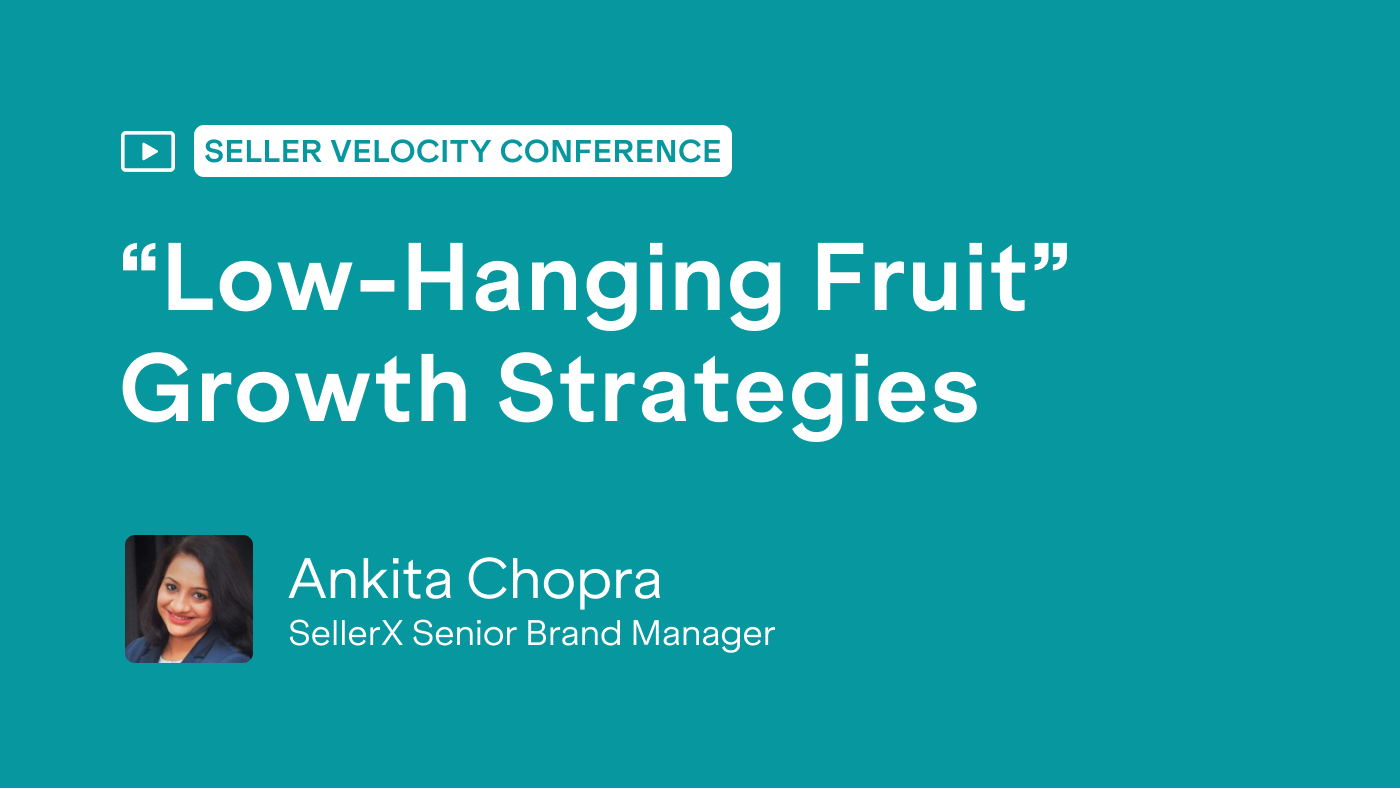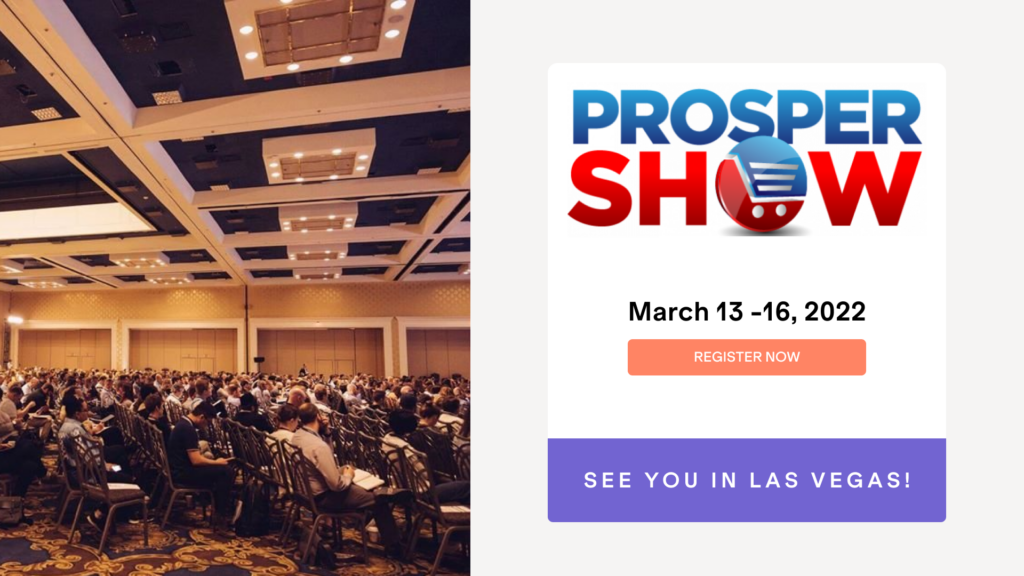Ankita Chopra joined Chris McCabe (also known as eCommerce Chris) and Leah McHugh recently for the crowd-favorite Seller Velocity Conference.
As a Senior Brand Manager at SellerX, Ankita spends her days masterminding growth strategies and finding opportunities for expansion. She recently spoke to Chris and Leah from the Seller Performance Solutions podcast about the most effective “low-hanging fruit” methods of supercharging AMZ hypergrowth.
In this webinar, Ankita, Chris, and Leah talk:
- SellerX’s first steps for scaling a brand
- How to increase conversion rates on AMZ listings
- Analyzing the market for product launch opportunities
Chris:
Hypergrowth. I like that word. We’ve talked to a lot of brands that I think all Amazon brands that are successful are starting to understand that the quicker they grow, the better just for competition purposes, right? Not that you want to grow the wrong way or anything like that, but they understand the resources required. I’m sure you at SellerX are talking about this all the time. What are the top one or two starting points that you have when you think of scaling a brand up, knowing the resources that are required for ads and for marketing and for influencers and brand awareness?
I mean, you’re trying to do multiples of growth. So how, how do you start that process?
Ankita:
So before we acquire brands for SellerX, we do an extensive due diligence for the brands. And when we do the due diligence for the brands, we identify what are the growth opportunities?
We divide them into what are the low hanging fruits and what can be immediately resolved with the resources that we have and what will be medium-term growth strategies or long-term growth strategies, which would depend on the resource required and also the time required just by the involvement of different players.
So I’ll give you an example. When we acquire a brand, low hanging fruits usually are in the operational efficiencies. So if a brand is planning to scale up, say this year or within a short period of time, then a lot of growth opportunities come from quick fixes, which will be under operational efficiency.
So when I say operation efficiencies, these are potentially easiest one is supply chain that the brand should have the supply chain under control that we try and maintain a hundred percent in stock. And there’s no out of stock in the brand.
Chris:
Supply chain issues, for starters. Inventory levels.
Inventory levels. Yeah. And then the easiest and the low-hanging fruit, usually when we acquire a brand, we identify is the understanding of the brand’s customers. So it all starts from the fact that how a brand is trying to position itself from, for the customers. So going through extensively through the reviews and ratings of the brand and the products, and also doing a competitive market analysis that what are the features and the benefits that the product listing the PDP pages, not yet able to communicate to the customers. So how do we make the listing more appealing to the customer who’s already landed on the product page. So that is where we start with missing optimizations first.
And, and in terms of like a case study or experience, or, you know, not specific examples, like naming brands, but just an example of what have you found where you see there’s a need for improvement and you can quickly improve it.
Ankita:
Yeah, definitely a lot of them. So like in my portfolio, I have 10 plus brands which are in different categories from kitchen, to baby to art supplies. So when I’ll take one example of a baby brand that we acquired in US, and we’ve been able to grow that brands revenue by 70% in the last 12 months and one of the major contributors was listing optimizations for the brand. So that brand is in the category of selling blankets for babies and the category is extremely competitive. Yeah. There are many beautiful designs. So we focused on how to highlight the listing page, focus more on design and features and benefits of those blankets that they are machine washable.
So we try to understand what are the pain points of the customer and go through competition reviews, go through competition listings and identify what they are not able to communicate and we try to communicate that in our listing. So we changed completely the title, the bullets. Then by doing an extensive SEO research, identifying what are the important keywords, what is relevant, what is trending.
And then we re-did the complete listing images. So focusing more, not on features, but more on benefits and then bringing in real models. So most of the brands that we acquired use images, which are Photoshop and stock images. So we went for shooting of real mother, real kids, and which brings that emotional aspects to the listings and the bigger thing that we’re also seeing is driving conversion rates by using videos.
So we shot a lot of product videos, which we use on the PDP. So that led to approximately I think the growth of 35% increase in conversion rate for the brand.
Leah:
When you guys are optimizing listing content, do you split test or focus groups? Like how do you guys decide on which content to go with?
Ankita:
Yeah, so we do it in multiple rounds. So first when we do the brand research and we identify who the customer is, we create a concept that what should be our listing concept. Then we test that listing concept using multiple services. One other service that we use is Pickfu, is just testing two or three different concepts and then we actually go for the shoots. And once we have the actual listing images, then we do extensive AB testing on Amazon itself by main image testing and A-plus layout testing, which are now features available to brand registered brands.
Leah:
Yeah. Interesting. Do you have like surprises when you do this split testing where you think one is going to be the successful one and it actually is beaten out by another one that you didn’t think was as good.
Ankita:
Yeah. All the time. Even if you feel that you know the customers by reading a lot and doing a lot of research, they are sometimes you get attached to a particular creative because you have developed it and then you realize that that is not something that customer wanted.And there are certain features the customer believes are coming out more in another product. So there’s one product that we sell, which is a shower caddy. And we believe that doing a lot of lifestyle shorts will add more value to the domain image to the second image, but when we did testings, what customer actually wanted was clarity on how big the product is, how many bottles can it fit in? How much weight can it carry? So more feature driven images. So, yeah, you get surprises all the time.
Leah:
Yeah, that’s funny.
Chris:
When it comes to brand growth, is there one tip that you give people who are trying to grow themselves before they’re aquired? Or maybe they’re not trying to get acquired they’re just trying to launch new skews or do you think like maybe they should fold that into the conversation they have with a potential aggregator about launching skews after, you know, letting the aggregator take that step for them.
Ankita:
But actually, I didn’t hear your question.
Chris:
Oh, I’m sorry. So some, some brands would try to add a skew or a different item, launch a new product themselves before they knew about aggregators or before they understood that aggregators were out there that could acquire them or grow their brand.
So these days I think a lot of brands are looking to sell because they expect somebody else to take over that growth and to launch those extra products, if they’re not ready to be acquired by an aggregator yet, what advice would you give them to prepare themselves to be– what advice would you give them to expand their brand before looking to get acquired?
Ankita:
Yeah, definitely. It’s an interesting question. When you launch a new product, how do you scale up a new product on Amazon? So if the brand is trying to launch variations, and that is something we really look for when we acquire brands, are there growth opportunities of launching more variations because they are just easier to source from a supply chain perspective. So the first scale up opportunity is to see in the market where is an opportunity for a variation in terms of color, in terms of design and just work with a supplier quickly to have smaller MOQ and launch and test in the market.
Or, what we look for is when you’re launching new products, we create virtual bundles with those products to leverage our existing products, ratings, and reviews, and then also combine them as virtual bundles. So as to give a quick boost to the new product launched and obviously entering new category altogether, which the brand can do.
Chris:
Awesome.
Leah:
Yeah. Great. Thank you so much.
Ankita:
Thank you so much for having me. It was a pleasure having a discussion with you guys.



